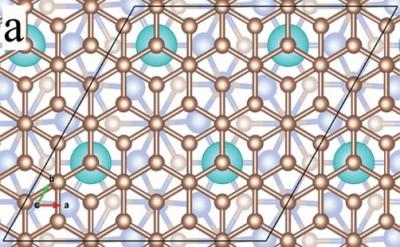Researchers at the U.S. Department of Energy’s Ames Laboratory successfully manipulated the electronic structure of graphene, which may enable the fabrication of graphene transistors that could be faster and more reliable than existing silicon-based transistors.

The researchers were able to theoretically calculate the mechanism by which graphene’s electronic band structure could be modified with metal atoms. The work will guide experimentally the use of the effect in layers of graphene with rare-earth metal ions sandwiched (intercalated) between graphene and its silicon carbide substrate. Since the metal atoms are magnetic, the additions can also modify the use of graphene for spintronics.
Density Functional Theory calculations predicted the configurations necessary to demonstrate control of the band gap structure. Our calculations guided the placement so that we can manipulate these quantum properties to behave the way we want them to.

